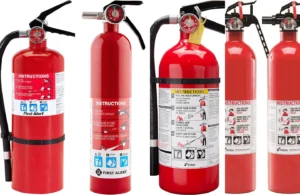The process of assessing fire risks is becoming increasingly important for households, especially in 2024, as climate change and technological advances create new barriers. In this article, we’ll discuss the basic steps you need to take to protect your home from fire. These steps include increasing awareness of hazards, using assessment tools and developing effective prevention strategies.
Know the dangers of fire
First, it is important to fully understand the typical fire threats in modern homes. These hazards can be divided into two broad categories: seasonal hazards and technical hazards.
Seasonal fire risk
Seasonal changes have a significant impact on fire danger levels. For example, in winter, indoor heating levels often increase, which can lead to fires if not managed properly. On the other hand, the possibility of forest fires during the summer also poses a significant risk.
The dangers of technology
Today’s homes have a wide range of technological devices and systems installed, from complex heating systems to smart kitchens. While these devices improve quality of life, they can also pose a fire hazard if they malfunction or are used incorrectly.
Assessment tools
Simply being aware of the danger is only the first step. Homeowners should also become familiar with the many tools and procedures available to assess these hazards.
Professional certification
Professional fire risk assessors will carry out a full home inspection, using their experience to identify potential hazards that you may not have considered.
Do’s self-assessment tool
You can carry out a basic fire safety inspection of your home using a number of do-it-yourself assessment tools, suitable for those who prefer to get their hands dirty.
Precautionary actions
Once the hazards have been assessed, the next crucial step is to put prevention strategies into practice.
changes in the structure
By making certain adjustments, such as installing fire-resistant roofing or replacing old wiring, the risk of fire can be significantly reduced.
Intelligent technology
To provide real-time fire prevention and control, smart technologies such as smoke detectors and sprinkler systems can be deployed.
Regular maintenance and repairs
Keeping a regular maintenance schedule for your home, including tasks such as cleaning lint traps and checking heating systems, is an important part of fire prevention.
Be prepared for emergencies
In addition to the need for prevention, preparation is the most important factor in effectively managing possible fire incidents.
fire safety equipment
Every home should have the most basic fire safety features installed, such as smoke detectors, fire extinguishers and fire blankets.
Planned exit program
Having a clear and practical evacuation plan ensures that all family members know how to safely escape the building in the event of a fire.
Rehabilitation and insurance coverage
Insurance is an important component when it comes to fire risk management, as it provides both financial protection and gets you back on your feet.
Choose the right insurance
When looking for fire insurance, it is important that you understand what policies are available and how they can meet your personal needs.
recovery after fire
The fire recovery process involves several steps, starting with determining the extent of the damage and then working with your insurance company to restore your home and contents.
final thoughts
In summary, while fire risks are a serious concern for homeowners, these risks can be successfully mitigated through the implementation of proactive management and rigorous assessment. Using personalized assessment tools, implementing strong prevention strategies, and having a solid emergency response plan are all crucial.



